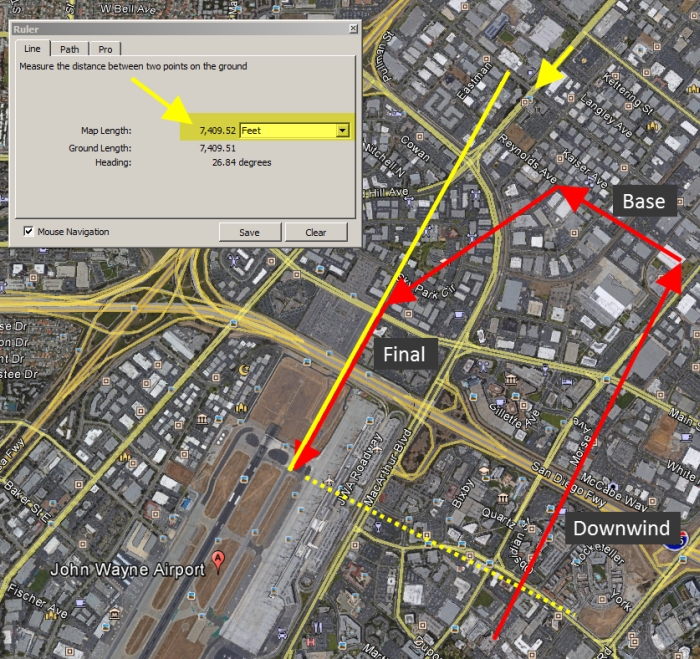OrangeCountyAviation
Pre-Flight
Before I start I want to say that I know this link was posted on another thread, but I want to go in a more detailed discussion about it and dissect what happened.
http://youtu.be/CZydrXAq2pY
I do not know the circumstances that led to the engine failure. What I do know is that it was an instructional flight and inbound to SNA. Another detail I know is that this road is adjacent to the airport on the west side.
What I want to talk about is how traffic patterns are treated. I fly them pretty tightly, and my flight school teaches to always be within glide of the runways when you can help it. Being too low on your pattern would result in a flunk of a stage check at my school.
The idea is that if your engine quit you will always be able to glide to the runways (makes sense, right?). I get uneasy when I see pilots flying 1.5 mile patterns and they are only 800 AGL way out there. My style of flying takes the concept even further. I'll be over 4,000 AGL a few miles out and use an aggressive slip to get down as I get closer.
Anyway, I just thought it's too bad that this plane landed on an adjacent road instead of making sure they could make the airport. Again, I don't know what the emergency was, so if it was something beyond their control then so be it. The most important thing as that both people are ok and uninjured.
I want to discuss the way we treat altitude in single engine airplanes, especially in the vicinity of the airport and in the traffic pattern. What's your take?
P.S. As a little footnote I want to add that this airplane happens to be in my logbook. It drops like a brick without power, so emphasizing glide in that Cherokee 140 would be even more important IMHO.
http://youtu.be/CZydrXAq2pY
I do not know the circumstances that led to the engine failure. What I do know is that it was an instructional flight and inbound to SNA. Another detail I know is that this road is adjacent to the airport on the west side.
What I want to talk about is how traffic patterns are treated. I fly them pretty tightly, and my flight school teaches to always be within glide of the runways when you can help it. Being too low on your pattern would result in a flunk of a stage check at my school.
The idea is that if your engine quit you will always be able to glide to the runways (makes sense, right?). I get uneasy when I see pilots flying 1.5 mile patterns and they are only 800 AGL way out there. My style of flying takes the concept even further. I'll be over 4,000 AGL a few miles out and use an aggressive slip to get down as I get closer.
Anyway, I just thought it's too bad that this plane landed on an adjacent road instead of making sure they could make the airport. Again, I don't know what the emergency was, so if it was something beyond their control then so be it. The most important thing as that both people are ok and uninjured.
I want to discuss the way we treat altitude in single engine airplanes, especially in the vicinity of the airport and in the traffic pattern. What's your take?
P.S. As a little footnote I want to add that this airplane happens to be in my logbook. It drops like a brick without power, so emphasizing glide in that Cherokee 140 would be even more important IMHO.
Last edited:



